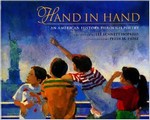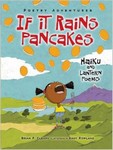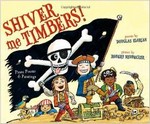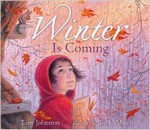Using words to connect with our world is something we humans do all the time. Sometimes these words are directed at people or animals, and sometimes they are sent out into the universe with the hope that someone or something can hear what we are saying. In today's poetry title you will encounter some poems that will resonate with anyone who has, among other things, asked for courage, who has lost something, who has lost someone, and who has felt regretful.

What the heart knows: Chants, Charms and Blessings
Joyce Sidman
Illustrated by Pamela Zagarenski
Poetry
For ages 12 and up
Houghton Mifflin, 2013, 978-0-544-10616-1
We humans have been using words “to try to influence the
world around us” for centuries. We have offered up prayers and chants to ask
for kinder weather, to secure safe passage on journeys, and to be victorious in
battle. We have sung songs to get the attention of our one true love, and to
bless our sleepy children before they slumber.
We now know that
songs and chants cannot save us from tornadoes, make our crops grow and protect
us from the newest wave of the flu, and yet we still write down words that are essentially
chants, charms or blessings, some of which are offered up in prayer or song. The
creation of these offerings helps us to celebrate, to grieve and to process our
anger. They allow us to communicate our feelings to the universe, and to even
gain an understanding about ourselves in the process.
In this
remarkable book Joyce Sidman offers us poems that will give readers much to
think about. She begins with Chants and
Charms: to bolster courage and guard against evil. Here readers will find a
chant to help repair a friendship, one in which the writer asks the reader to
“forgive the past” and to give love, which “is vast,” a chance. The form of the
chant is beautifully lyrical.
For those days
when courage is in small supply or when doubt fills the heart there is Song of Bravery, a poem that will help
anyone facing a day that is full of grey clouds and possible pitfalls. Here
readers will find the words of one who is unsure and perhaps even afraid, and
yet who is going to step “into the glare of the arena / to face the lions.”
Occasionally we
wish we could, with our words, “cause something to happen.” This is when the Spells and Invocations section in this
book will come in handy, and Joyce Sidman gives us several poems that will
surely be useful. The first in particular will come in handy almost every day
as it is an Invitation to Lost Things.
Here at last are the words we need to call out to those objects that are always
going missing; those cell phones that seem to grow feet and walk away, and
those pairs of things – such as earring and socks – that are constantly losing
their mate. In her poem Joyce Sidman’s words are gentle and placating as she
asks these wayward things to come back because without them “we are lost / in
this big world of ours.”
Following the
spells we come to the Laments and
Remembrances. Here we find poems that remember things, that regret those
things that are no more, and that grieve for those who have left us. These
poems are followed, very aptly, by Praise,
Songs and Blessings, which are poems that “celebrate, thank, or express
love.”
This is a
remarkable book full of poems that are rich with beauty and wisdom, and readers
will want to read than again and again.
 The Dark
The Dark The Dark
The Dark



























